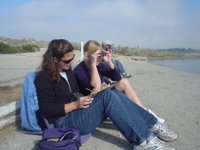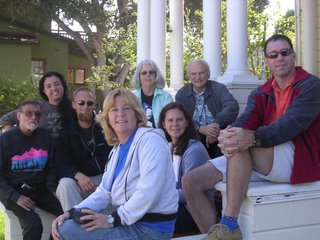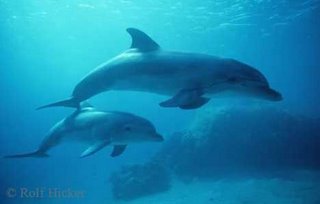
The story of the day is about an elephant seal that "hauled out" on the beach very close to where we were doing our observations. She did not look well. Upon closer observation, we noticed she had a large in
 jury just under her left pectoral fin. We made a call to the Marine Mammal Center and reported her. They arrived and inspected her. They informed us that the injury was bad, but was not new. They were not sure if it was a shark bite or possibly a boat inflicted injury. She was actually recovering pretty well. They also said that she was considerably under weight probably only 500 lbs. She is an older female and had probably hauled out to get some rest. The crew on the boat observing dolphins today spotted a small group of killer whales! My field study group will be out on the boat tomorrow. Hope we get that lucky. Tonight we will go back to the house and spend 2 hours entering the day's data into the various data bases. This process must be completed after each day in the field.
jury just under her left pectoral fin. We made a call to the Marine Mammal Center and reported her. They arrived and inspected her. They informed us that the injury was bad, but was not new. They were not sure if it was a shark bite or possibly a boat inflicted injury. She was actually recovering pretty well. They also said that she was considerably under weight probably only 500 lbs. She is an older female and had probably hauled out to get some rest. The crew on the boat observing dolphins today spotted a small group of killer whales! My field study group will be out on the boat tomorrow. Hope we get that lucky. Tonight we will go back to the house and spend 2 hours entering the day's data into the various data bases. This process must be completed after each day in the field.1. How much should an adult female elephant seal weigh?










